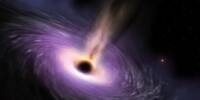The windy and chaotic remnants of recently destroyed stars could be launching the universe’s fastest particles. Pulsars are highly magnetic neutron stars that produce a quick and strong magnetic wind. When charged particles, specifically electrons, become trapped in these turbulent settings, they can be accelerated to extraordinary energy, astrophysicists describe in the Astrophysical Journal Letters on April 28. Furthermore, those speedy electrons can subsequently accelerate some ambient light to equally extreme energies, potentially producing the very high-energy gamma-ray photons that led astronomers to discover these particle launchers in the first place.
“This is the first step in exploring the connection between the pulsars and the ultrahigh-energy emissions,” says astrophysicist Ke Fang of the University of Wisconsin, Madison, who was not involved in this new work.
Last year, researchers from China’s Large High Altitude Air Shower Observatory (LHAASO) announced the finding of the highest-energy gamma rays ever observed, with energies reaching 1.4 quadrillion electron volts. This is nearly 100 times more energetic than the peak energy attained by the world’s most powerful particle accelerator, the Large Hadron Collider in Geneva. Identifying the source of these and other exceptionally high-energy gamma rays could lead to the precise location of cosmic rays – the zippy protons, heavier atomic nuclei, and electrons that attack Earth from beyond our solar system.
This is the first step in exploring the connection between the pulsars and the ultrahigh-energy emissions. Pulsars are definitely very powerful accelerators, with several places where particle acceleration can happen.
Ke Fang
Some gamma rays are assumed to come from the same place as cosmic rays. Cosmic rays, immediately after being released, can collide with relatively low-energy ambient photons, boosting them to high-energy gamma rays. However, because galactic magnetic fields buffet the electrically charged cosmic rays, they do not travel in a straight path, complicating efforts to trace the zippy particles back to their source. However, because gamma rays are immune to magnetic fields, astrophysicists can follow their unswerving routes back to their beginnings — and figure out where cosmic rays are formed.
To that end, the LHAASO team traced the hundreds of gamma-ray photons that it detected to 12 spots on the sky. While the team identified one spot as the Crab Nebula, the remnant of a supernova about 6,500 light-years from Earth, the researchers suggested that the rest could be associated with other sites of stellar explosions or even young massive star clusters.
Astrophysicist Emma de Oa Wilhelmi and colleagues focused on one of those probable origins in their latest study: pulsar wind nebulas, which are clouds of turbulence and charged particles encircling a pulsar. The researchers were skeptical that such locations could produce such high-energy particles and light, therefore they set out to prove that pulsar wind nebulas were not the source of extreme gamma rays using calculations. “However, to our amazement, we observed that under really extreme conditions, you can explain all the sources [that LHAASO saw],” explains de Oa Wilhelmi of the German Electron Synchrotron in Hamburg.

The young pulsars at the heart of these nebulas — no more than 200,000 years old — can provide all that oomph because of their ultrastrong magnetic fields, which create a turbulent magnetic bubble called a magnetosphere.
According to de Oa Wilhelmi, any charged particles travelling in a strong magnetic field are accelerated. The Large Hadron Collider achieves extraordinary particle energy in this manner. The team calculates that a pulsar-powered accelerator can push particles to much greater energy. This is due to electrons escaping the pulsar’s magnetosphere and colliding with material and magnetic fields from the supernova explosion that generated the pulsar. The team discovers that these magnetic fields may further accelerate electrons to even higher energies, and that if those electrons collide with ambient photons, they can amplify those light particles to ultrahigh energies, transforming them into gamma rays.
“Pulsars are definitely very powerful accelerators,” Fang says, with “several places where particle acceleration can happen.”
And this could cause some confusion. Gamma-ray telescopes have poor vision. LHASSO, for example, can only see details as small as half the size of the full moon. According to de Oa Wilhelmi, the gamma-ray sources detected by the telescope appear as blobs or bubbles. There could be several energetic sources within those blobs, which are currently unresolved by existing observatories.
“We should be able to detect what [and] where the accelerator is with improved angular resolution and sensitivity,” she says. A few future observatories, such as the Cherenkov Telescope Array and the Southern Wide-field Gamma-ray Observatory, may be of assistance, but these are several years away.
















